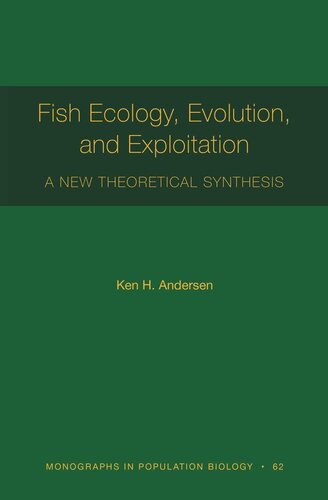

Most ebook files are in PDF format, so you can easily read them using various software such as Foxit Reader or directly on the Google Chrome browser.
Some ebook files are released by publishers in other formats such as .awz, .mobi, .epub, .fb2, etc. You may need to install specific software to read these formats on mobile/PC, such as Calibre.
Please read the tutorial at this link: https://ebookbell.com/faq
We offer FREE conversion to the popular formats you request; however, this may take some time. Therefore, right after payment, please email us, and we will try to provide the service as quickly as possible.
For some exceptional file formats or broken links (if any), please refrain from opening any disputes. Instead, email us first, and we will try to assist within a maximum of 6 hours.
EbookBell Team

5.0
78 reviewsThis book presents a mathematical theory of fish stocks and fish communities that will be relevant to ecologist and evolutionary biologists as well as applied scientists who work on problems in fisheries management.
Fish are one of the most important global food sources, supplying a significant share of the world’s protein consumption. From stocks of wild Alaskan salmon and North Sea cod to entire fish communities with myriad species, fisheries require careful management to ensure that stocks remain productive, and mathematical models are essential tools for doing so. Fish Ecology, Evolution, and Exploitation is an authoritative introduction to the modern size- and trait-based approach to fish populations and communities.
Ken Andersen covers the theoretical foundations, mathematical formulations, and real-world applications of this powerful new modeling method, which is grounded in the latest ecological theory and population biology. He begins with fundamental assumptions on the level of individuals and goes on to cover population demography and fisheries impact assessments. He shows how size- and trait-based models shed new light on familiar fisheries concepts such as maximum sustainable yield and fisheries selectivity—insights that classic age-based theory can’t provide—and develops novel evolutionary impacts of fishing. Andersen extends the theory to entire fish communities and uses it to support the ecosystem approach to fisheries management, and forges critical links between trait-based methods and evolutionary ecology.
Accessible to ecologists with a basic quantitative background, this incisive book unifies the thinking in ecology and fisheries science and is an indispensable reference for anyone seeking to apply size- and trait-based models to fish demography, fisheries impact assessments, and fish evolutionary ecology.